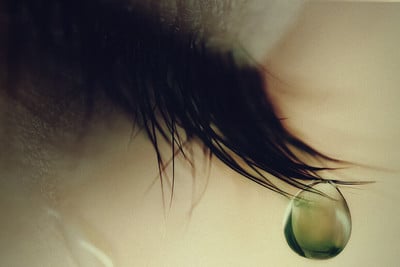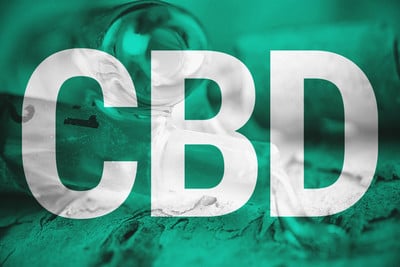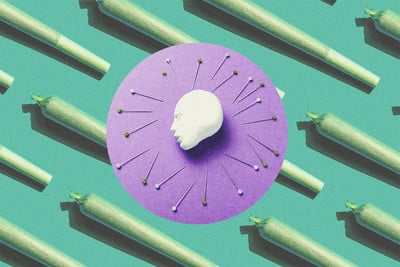CBD-Rich Cannabis Seeds: An Introduction

Contents:
- What are cbd seeds?
- Who uses cbd seeds, and why?
- The endocannabinoid system
- How cbd affects the endocannabinoid system
- Cbd: versatile benefits without the high
- Cbd, thc, and the entourage effect
- The important cbd:thc ratio
- Get to know cbg and cbdv
- Rqs medical strains you need to try
- Top cbd strains for different scenarios
- Basic information about cannabinoids you should be aware of
With research into the therapeutic potential of cannabis flourishing, and with more studies on the benefits of individual cannabinoids being released, cannabis has become a widely discussed topic within the health and wellness sphere.
Below, we delve into the ever-expanding world of CBD strains. We’ll touch upon how CBD affects the endocannabinoid system, then we’ll offer you some guidance on CBD:THC ratios so you can make an informed choice when selecting a CBD-rich strain.
WHAT ARE CBD SEEDS?
While in previous times cultivators and consumers were chasing higher and higher THC levels, today, strains are being bred to contain high levels of CBD with almost no THC. While these strains won’t get users high, they are extremely worthwhile.
It was only in the mid-2000s that “commercial” CBD seeds first started to emerge. Groundbreaking cultivars like the Diesel-derived Juanita la Lagrimosa paved the way for CBD-rich, low-THC varieties.
Using this and a few other strains as the breeding stock, industrious cultivators got to work selectively breeding different cultivars for higher and higher CBD content, while doing their best to eliminate or mediate the presence of THC.
Still, to satisfy consumer demand, it was necessary for these strains to feature good production and easy growth, as well as nice flavour and an overall sellable appearance.
WHO USES CBD SEEDS, AND WHY?
Today, medicinal and recreational users enjoy CBD-rich cannabis strains for similar and different reasons.
Instead of the characteristic THC “high”, CBD induces a mellow, calming state that eases tension without altering your ability to focus or remain productive.
As such, it’s often enjoyed by those looking to take the edge off a stressful day, or by those looking to add a clear-headed edge to their nightly bong. Indeed, just like other cannabis seeds, you can consume CBD strains in joints or bongs or can make them into edibles and concentrates.
While some people like to use it exclusively, others use CBD to temper their THC use or to remain alert and balanced during the day.
On the Royal Queen Seeds website, you can find some top-tier high-CBD, low-THC strains like Solomatic CBD (21% CBD and never more than 1% THC) and the delicious Purplematic CBD.
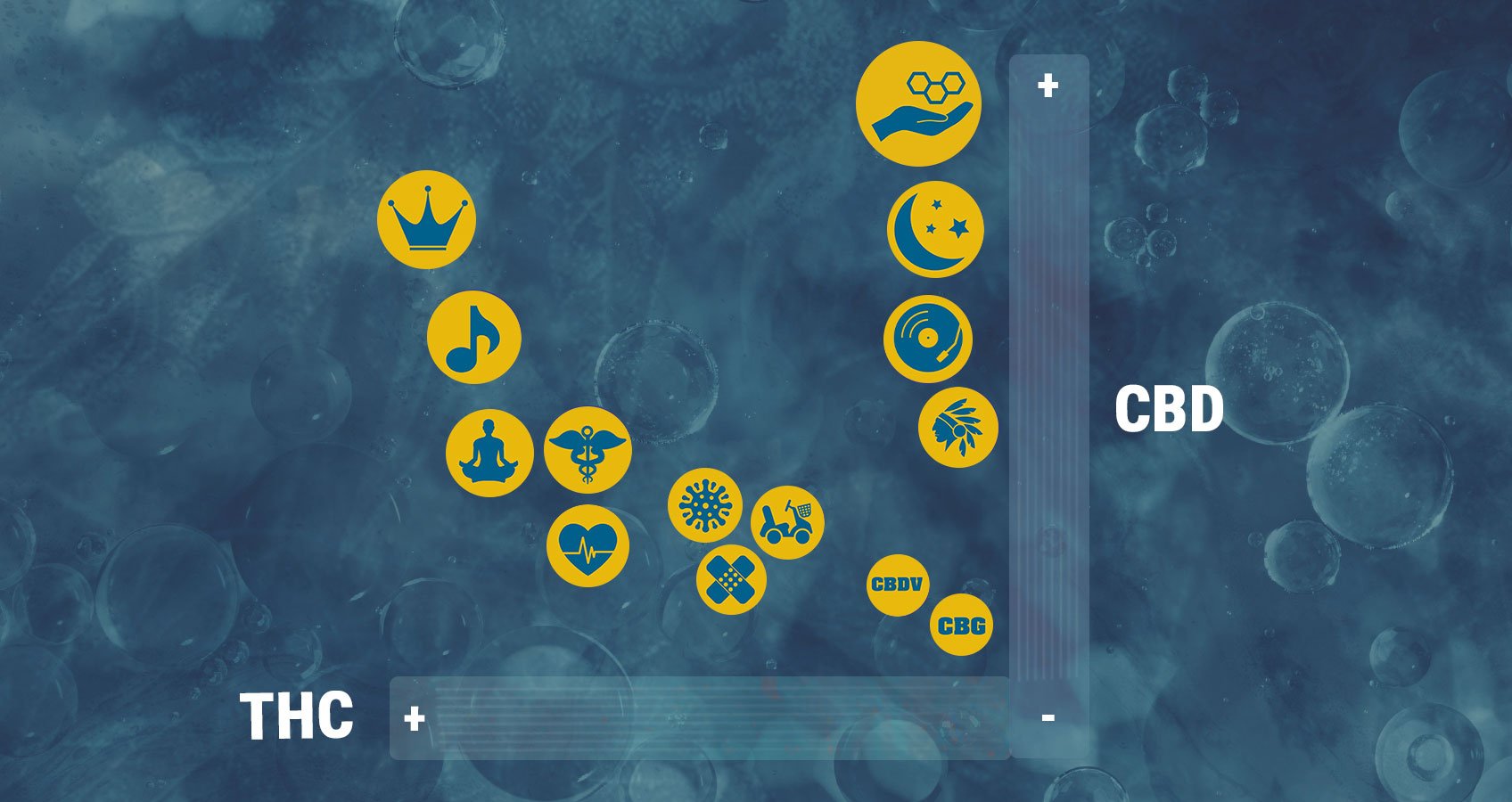
| RQS CBD STRAINS | |||||
|---|---|---|---|---|---|
| Tatanka Pure CBD THC: 0,15 - 0,25% / CBD: High |
Solomatic CBD THC: 1 % / CBD: 21% |
Purplematic CBD THC: 0,5 % / CBD: 17% |
|||
| Joanne's CBD THC: 0,25 - 0,75% / CBD: 15% |
Dance World THC: 12 % / CBD: High |
Fast Eddy THC: 9 % / CBD: High |
|||
| Royal Medic THC: 10 % / CBD: High |
Royal Highness THC: 14 % / CBD: High |
Euphoria THC: 9 % / CBD: High |
|||
| Stress Killer Automatic THC: 11 % / CBD: High |
Medical Mass THC: 10 % / CBD: High |
Painkiller XL THC: 9 % / CBD: High |
|||
| Royal CBG Automatic THC: 0,09 % / CBD: High |
Royal CBDV Automatic THC: 0,3 % / CBD: 5 % |
||||
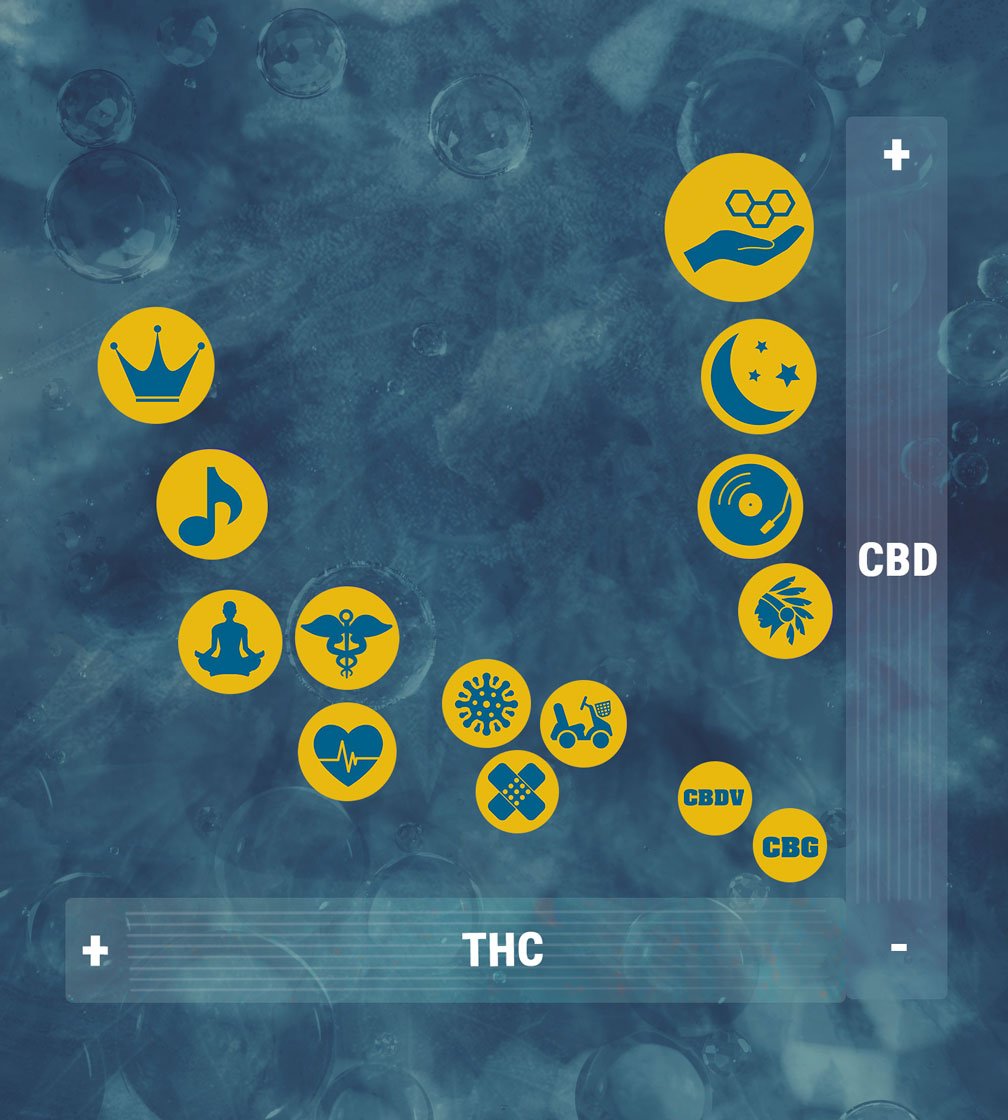
| RQS CBD STRAINS | |
|---|---|
| Tatanka Pure CBD (THC: <0,25% / CBD: High) |
|
| Solomatic CBD (THC: 1 % / CBD: 21%) | |
| Purplematic CBD (THC: 0,5 % / CBD: 17%) | |
| Joanne's CBD (THC: 0,25 - 0,75% / CBD: 15%) | |
| Dance World (THC: 12 % / CBD: High) | |
| Fast Eddy (THC: 9 % / CBD: High) | |
| Royal Medic (THC: 10 % / CBD: High) | |
| Royal Highness (THC: 14 % / CBD: High) | |
| Euphoria (THC: 9 % / CBD: High) | |
| Stress Killer Automatic (THC: 11 % / CBD: High) | |
| Medical Mass (THC: 10 % / CBD: High) | |
| Painkiller XL (THC: 9 % / CBD: High) | |
| Royal CBDV Automatic (THC: 0,3 % / CBD: 5 %) | |
| Royal CBG Automatic (THC: 0,09 % / CBD: High) | |
THE ENDOCANNABINOID SYSTEM
The endocannabinoid system is innately involved in many physiological processes. It uses internally produced “endocannabinoids” to help regulate our mood, appetite, sleep cycle, and perception of pain, among other functions.
Named after the cannabis plant, the endocannabinoid system (ECS) was actually discovered when studying the effects of marijuana on humans. This physiological system consists of receptors located throughout the central and peripheral nervous system, immune system, and beyond.
Cannabinoids found outside the human body, called exogenous cannabinoids or “phytocannabinoids” (derived from plants), can activate this system to a potentially higher degree than endocannabinoids. This allows the endocannabinoid system to work in novel, productive, and powerful ways.
A perfect example of this is the psychoactive effect experienced when smoking or otherwise consuming THC-rich cannabis. From here, researchers are uncovering many other ways in which cannabis can stimulate the ECS to exert potentially therapeutic outcomes in humans.
While THC is one cannabinoid being studied for this purpose, it’s not the only one.
HOW CBD AFFECTS THE ENDOCANNABINOID SYSTEM
What makes CBD interesting is that it interacts with cannabinoid receptors in the body differently than THC. Instead of binding to CB1 or CB2 receptors, it modulates their activity indirectly.
For instance, CBD works against the production of fatty acid amide hydrolase, an enzyme that breaks down anandamide, a prominent endocannabinoid.
In doing so, CBD increases the availability of this internal cannabinoid in the brain, without binding directly to endocannabinoid receptors. Ultimately, anandamide triggers the same receptor as THC, resulting in therapeutic effects throughout the body.
CBD: VERSATILE BENEFITS WITHOUT THE HIGH
Because of this, CBD does not have any intoxicating or psychotropic effects. It is therefore more widely respected by medical professionals and consequently easier to source.
CBD is being invoked as a possible treatment for a range of conditions; however, it’s crucial to note that much of the research on CBD’s therapeutic potential is preclinical or inconclusive.
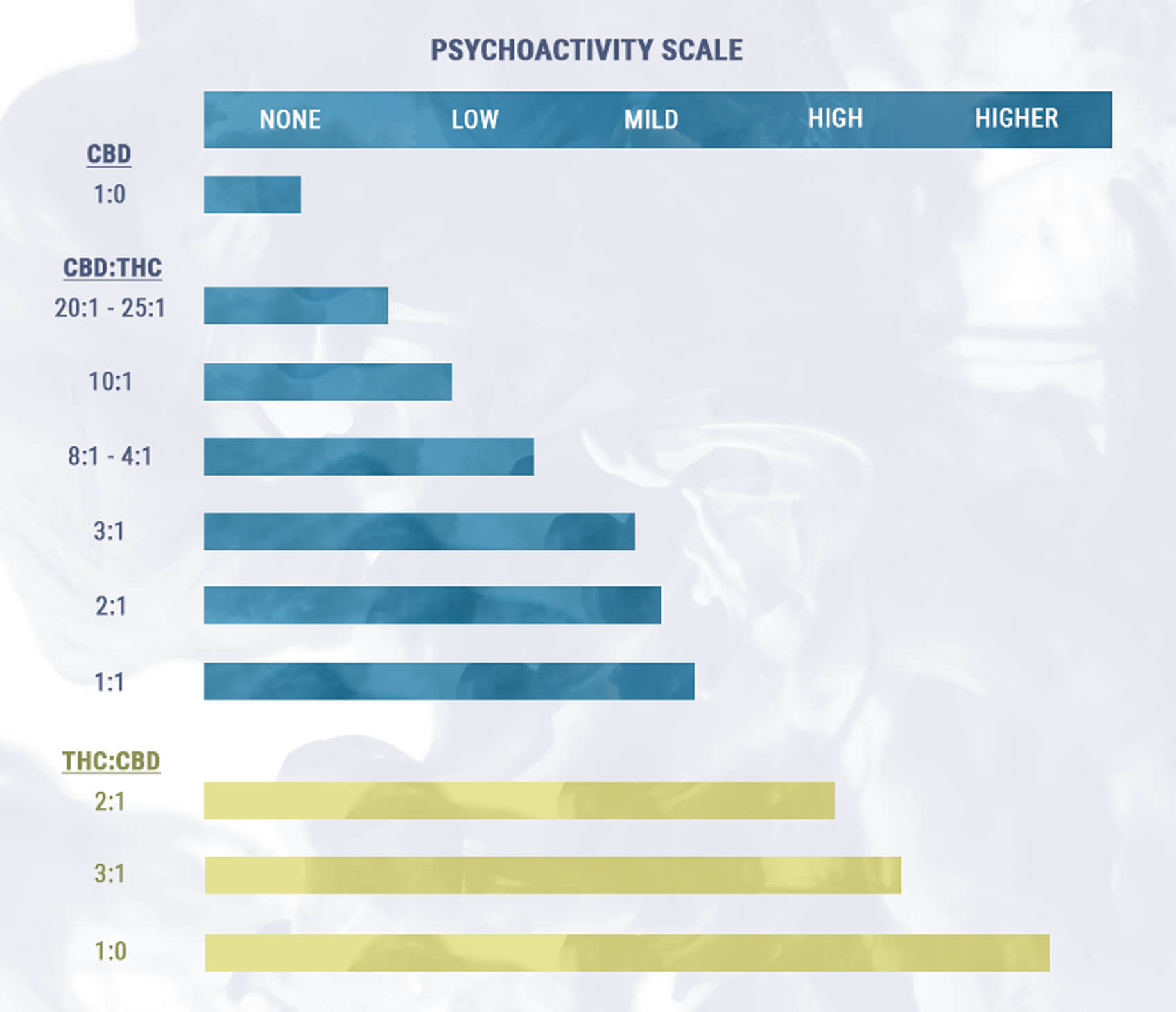
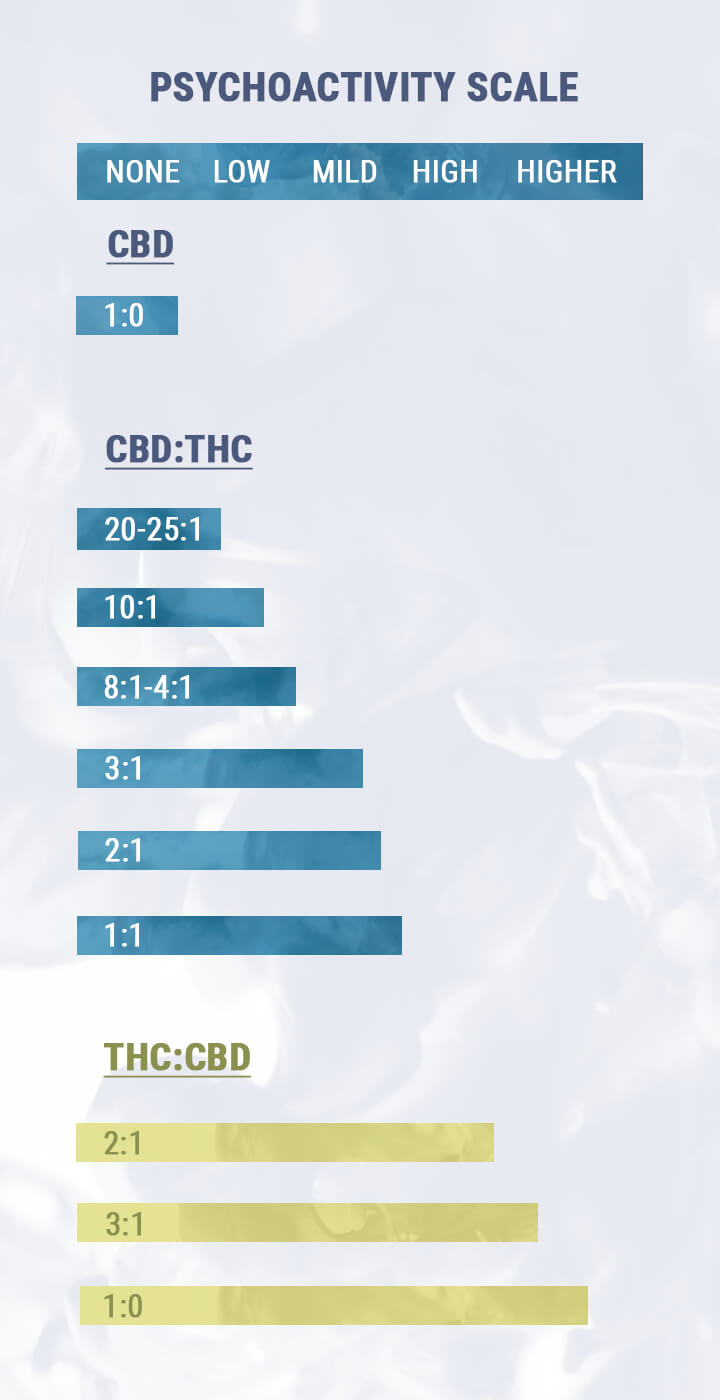
While studies suggest many beneficial actions, including anti-inflammatory[1], anticonvulsant[2], and anxiolytic[3] functions, there are very few conditions for which CBD is considered an actual treatment.
Perhaps the best known example is the synthetic CBD spray Epidiolex, an FDA-approved treatment for two rare types of childhood epilepsy: Dravet syndrome and Lennox-Gastaut syndrome.
Still, the scope of CBD’s potential appears to span far beyond this. As more human trials come to light, we are bound to see the landscape of these developments change.
CBD, THC, AND THE ENTOURAGE EFFECT
Interestingly, CBD appears to modulate the psychoactive effects of THC when the two cannabinoids are taken together. By weakening THC’s bond with the CB1 receptor, the resulting high is less intense.
This lends to a larger theory that the chemical compounds in cannabis, such as cannabinoids and terpenes, are more effective when used together than in isolation—the "entourage effect".
For recreational users, CBD can help delay and mediate the effects of THC to allow for a more pleasant overall experience.
THE IMPORTANT CBD:THC RATIO
When browsing CBD-rich seeds, you will often come across their CBD:THC ratio. This is the amount of CBD relative to THC contained in a particular cannabis strain.
Due to potential synergy between these two cannabinoids, selecting strains with different ratios can be advantageous for different types of users.
If you’re still new to cannabis, it can be a good idea to start out with a low-THC strain and see how you feel. If desired, you can gradually work your way up to strains with higher THC concentrations.
Here’s a breakdown of the different CBD:THC ratios you’ll come across:
| 1:0 |
Contains no THC at all, so there is no psychoactive effect whatsoever. Suitable for all users, including those with zero tolerance to THC. |
|
20:1-25:1 |
Very high levels of CBD and little THC results in no real psychoactive effect. Recommended for new cannabis users and medicinal users seeking maximum CBD without a high. |
| 8:1-4:1 |
These strains have a relatively low amount of THC, resulting in a very mild high. This ratio is advised for people who enjoy CBD but find that some THC helps them. |
| 2:1 |
With double the amount of CBD to THC, users can fully benefit from both cannabinoids when choosing this highly sought-after ratio. These strains are somewhat psychoactive, so they may not be recommended for beginners or first-time users. |
| 1:1 |
Perfectly balanced CBD:THC ratio. Recommended for experienced users who can tolerate the effects of THC. |
| 1:0 |
|
Contains no THC at all, so there is no psychoactive effect whatsoever. Suitable for all users, including those with zero tolerance to THC. |
| 20:1 - 25:1 |
|
Very high levels of CBD and little THC results in no real psychoactive effect. Recommended for new cannabis users and medicinal users seeking maximum CBD without a high. |
| 8:1 - 4:1 |
|
These strains have a relatively low amount of THC, resulting in a very mild high. This ratio is advised for people who enjoy CBD but find that some THC helps them. |
| 2:1 |
|
With double the amount of CBD to THC, users can fully benefit from both cannabinoids when choosing this highly sought-after ratio. These strains are somewhat psychoactive, so they may not be recommended for beginners or first-time users. |
| 1:1 |
|
Perfectly balanced CBD:THC ratio. Recommended for experienced users who can tolerate the effects of THC. |
It all comes down to you. If you enjoy the psychoactive high of cannabis but want to give CBD a try, look for strains with a 1:1 or 1:2 CBD:THC ratio. This way, you will still feel elevated, without being stoned out of your mind.
Get To Know CBG and CBDV
Cannabis flowers contain over 100 cannabinoids. Although CBD receives most of the limelight, cannabis researchers are starting to better understand some other members of this large molecular family.
At Royal Queen Seeds, our innovative breeders are helping to pave the way forward by creating strains that offer unique cannabinoid profiles rarely found elsewhere. So far, we’ve developed varieties that contain high levels of cannabigerol (CBG) and cannabidivarin (CBDV).
Like CBD, both of these novel cannabinoids are non-psychoactive and produce their own unique effects. Although research remains extremely early, these molecules appear to activate the endocannabinoid system in slightly different ways.[4]
Our strain Royal CBG Automatic offers CBG levels of 6-8%, alongside high quantities of CBD and almost no THC. This cultivar offers an easy and rapid yield and provides a clear-headed and functional effect.
Our breeders also created a high-CBDV strain by crossing Solomatic with Durban Poison. Royal CBDV Automatic offers around 5% CBDV, 5% CBD, and only trace levels of THC.
RQS MEDICAL STRAINS YOU NEED TO TRY
RQS MEDICAL STRAINS YOU NEED TO TRY
TOP CBD STRAINS FOR DIFFERENT SCENARIOS
TOP CBD STRAINS FOR DIFFERENT SCENARIOS
BASIC INFORMATION ABOUT CANNABINOIDS YOU SHOULD BE AWARE OF
BASIC INFORMATION ABOUT CANNABINOIDS YOU SHOULD BE AWARE OF
- Cannabinoids as novel anti-inflammatory drugs https://www.ncbi.nlm.nih.gov
- Cannabinoids in the Treatment of Epilepsy: Hard Evidence at Last? https://www.ncbi.nlm.nih.gov
- Cannabidiol in Anxiety and Sleep: A Large Case Series https://www.ncbi.nlm.nih.gov
- Cannabis Pharmacology: The Usual Suspects and a Few Promising Leads http://ethanrusso.org










































